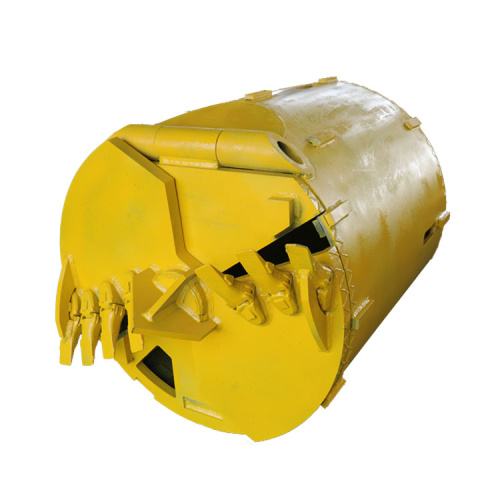Classification of common rotary drilling rig bits
Related products Link:
Classification of common rotary drilling rig bits
Common rotary drilling rig bits can be divided into: auger bits, selection buckets, barrel coring bits, bottom expanding bits, impact bits, punching and grabbing cone bits, and hydraulic grabbing buckets.
1. Spiral bit
(1) Conical: Double-ended double screw, suitable for hard bedrock. Double-headed single snail, suitable for weathered bedrock, pebbles, frozen soil, etc. The above drill bits are equipped with various picks, and many types of drill bits can be derived through the change of tooth type, pitch and helix angle.
(2) Z auger bit:
a. Bucket tooth Z screw: double-headed double screw, suitable for sandy soil, small Z-diameter gravel layer with poor cementation; double-headed single screw, suitable for sand and soil layer; single-headed single screw, suitable for large poor cementation. Z-diameter pebbles, clay and hard clay.
b. Pick Z snails: There are double snails, triple snails and four snails, which are suitable for hard bedrock or pebbles.
2. Rotary drilling bucket
According to the installed teeth, it can be divided into pick bucket and bucket tooth bucket; according to the number of bottom plates, it can be divided into double-layer bottom bucket and single-layer bottom bucket; according to the number of doors, it can be divided into double-door bucket and single-door bucket; Taper can be divided into cone bucket drill bucket and Z bucket drill bucket; according to the shape of the low plate, it can be divided into pot bottom drill bucket and flat bottom drill bucket. The above structural forms are combined with each other, plus whether there are ventilation holes and changes in the door opening mechanism, dozens of rotary drilling buckets can be combined. Generally speaking, the double bottom drill bucket is suitable for a wide range of strata, the single bottom drill bucket is only suitable for the viscous soil layer, the double door drill bucket is suitable for a wide range of strata, and the single door drill bucket is only used for pebbles with large Z diameter. and hard cement.
3. Barrel core drill
At present, there are two common types: pick barrel drill (applicable to medium hard bedrock and pebble gravel), roller cone drill (applicable to hard bedrock and large boulder). Among the two major types of barrel core drills, there are two types of drill bits with and without coring devices, which mainly depend on the difficulty of coring. Because the roller cone bit is mainly used for hard rock drilling, and the annular area for drilling is large, if conditions permit, reverse circulation drilling can be added to the bit part to improve drilling efficiency.
4. Bottom expanding drill
On the basis that the pile diameter does not increase and the pile depth does not increase, in order to improve the bearing capacity of the single pile, the design department often realizes it by expanding the bottom pile. The bottom expansion of the rotary drilling rig can be constructed without any modification. Bottom drill bit. The commonly used drill bits are mechanical, which are relatively simple to use and maintain. There are upper opening and lower opening types. The opening mechanism is generally a four-bar linkage, which is used for soil layers, strong winds and moderate weathering. Formation even hard bedrock. Since the rotary drilling is non-circulating drilling, the slag can be cleaned with a slag cleaning bucket after the bottom expansion is completed.
5. Impact drill bit, punching taper drill bit
When drilling large Z-diameter pebbles, large boulders and hard bedrock, it is particularly useful to use impact drill bits and punching cone drill bits to cooperate with rotary drilling. It has an impact effect, so it is required that the auxiliary hook has the function of free rope release to be very effective.
6. Hydraulic grab bucket
At present, there are more and more construction projects of diaphragm wall and seepage prevention wall. If the rotary drilling rig is slightly modified, it can be operated. The opening and closing of the hydraulic grab is driven by hydraulic pressure. There is only one oil cylinder on the hydraulic grab, so only It needs two oil pipes in and out, and one control valve.





